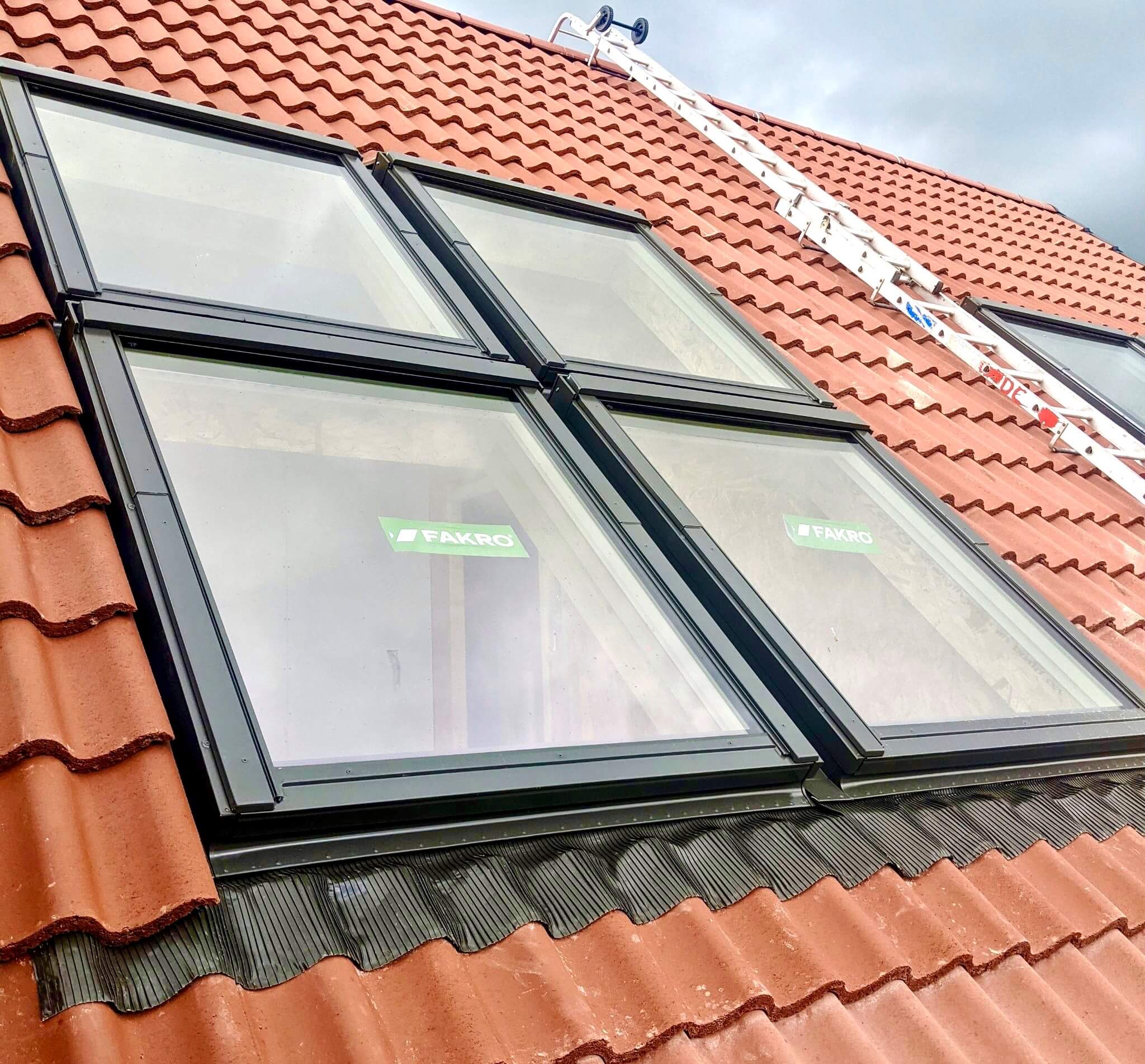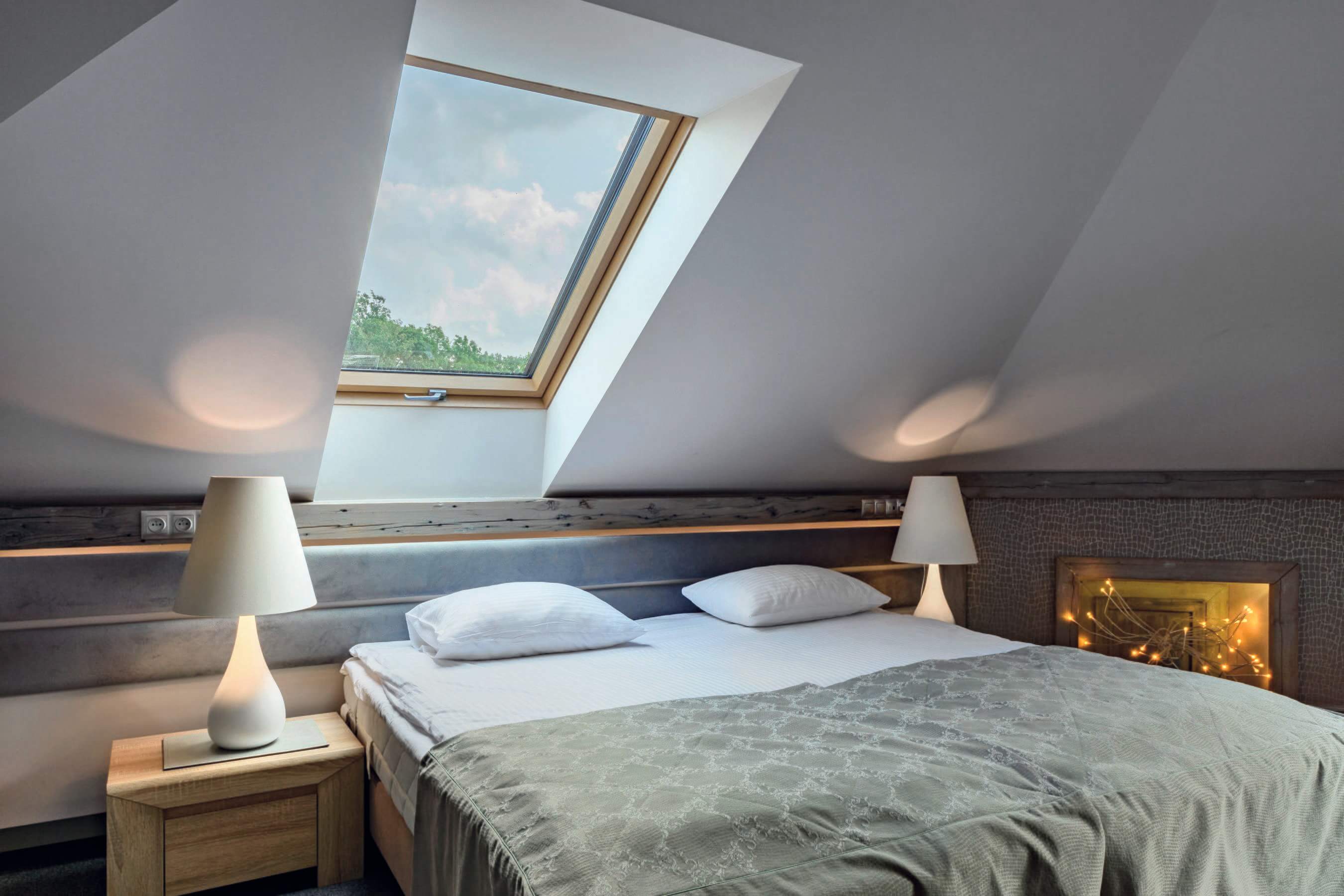What Are the Types of Roof Windows?

There are a wide range and number of styles of flat roof windows, pitched roof windows and electric roof windows available through our site, and all are suitable for different roof types and applications. It is crucial to decide which is best for your needs when adding a window to your roof, so we're here to take you through the basic functions and benefits of each.
Pivot Roof Windows
This is one of the most basic types of roof windows available. They open only via a centre pivot and can be rotated a whole 180 degrees. The handle is at the top of the window, and when pulled, the frame swings out from the bottom. The design of the window means that is can be installed lower than usual, and furniture can also be positioned underneath for maximum benefit when it comes to use of natural lighting. The windows can be equipped with internal and external accessories, and they help in increasing the flow of light and air into a room.
 Windows with Raised Axis of Rotation
Windows with Raised Axis of Rotation
In this instance, the axis of rotation is situated above the centre of the window. This means even taller people can walk up to the edge of the window. The roof light functions in two ways – the lower part of the sash fulfils a top hung window function, and the upper part of the sash is an additional source of daylight. The window opens via the centre pivot method, and it is lockable at 160 degrees for cleaning purposes.
This skylight is the only window on the market when installed in roofs with pitches 39º- 43º that satisfies the requirements of DIN 5034-1 standard, according to which the bottom window edge must be situated 95cm above the floor level and the top window edge must be a minimum of 220 cm above floor level.
Windows with Raised Axis of Rotation with Lower Transom
The two sashes of these flat roof windows act in different ways, though both are placed in the single frame. The upper sash can be opened like a pivot window but its axis of rotation is situated above the centre of the window. This sash is locked for cleaning at 160 degrees. The lower sash is non-opening with external pane laminated.
This style of rooflight eliminates the need for vertical combinations, which in turn can help increase illumination and ventilation in the room, plus a wider view of the outside of the room.
The only window on the market that when installed in roofs with pitches 30º-43º satisfies the requirements of DIN 5034-1 standard, which states that bottom window edge must be situated 95cm above the floor level and the top window edge must be a minimum of 220 cm above floor level.
Top Hung and Pivot Windows
Top hung and pivot roof windows can be configured to open from 0 to 35 degrees for unobstructed views of your outdoor space. They are similar to Centre Pivot windows, except the hinge is located at the top of the frame, which allows the window to swing the whole length out. Although one of the simpler skylight designs, these windows can be equipped with internal and external accessories and are easy to clean, as well as being a great option for letting more fresh air and natural light into a space.
This style of pitched roof windows is often used for windows that are easy to reach and with no furniture in front of them – as this can affect how safely and comfortably you are able to swing the window open.
Panoramic Top Hung Windows
Panoramic Fakro roof windows are usually larger in dimension and open to a wider angle to allow you to enjoy the light and views from the outside in more ways.
The 40-degree opening function promotes easy approach to the window, but you can take this a step further by opening the window to its full 68 degrees. In doing so, unobstructed access to the roof and views can help with the aesthetic value of installing these windows.
These windows can also be used as an emergency escape window.
 Balcony Windows
Balcony Windows
Balcony roof windows are a beautiful and innovative addition to a home that allow you to bring the outside in, and to give a room the illusion of more space. The sashes of the window create a balcony when opened. The upper sash opens to 45 degrees, and the lower sash can be tilted upwards to a vertical angle.
There are safety barriers integrated into the bottom sash, and these rails are hidden inside the window and are not visible above the roof surface when the roof window is not open.
The balcony automatically locks with a multi-point locking system, so to close the balcony window again, the locks located by the rails of the frame must be released. Plus, these windows don’t need planning permission in order to create this additional balcony space! These are the perfect option for city living – where outdoor space may be otherwise minimal, you can instead create your own!
L-Shaped Combination Windows
Usually installed where a roof meets a vertical wall, L-Shaped flat roof windows extend the roof window into the wall, which vastly increases the amount of light allowed into the room.
These skylights can be opened in both tilt and tilt and turn styles.
Side Hung Escape Window
These roof lights are available as right opening or left opening, and both styles allow for safe and easy access to the roof. They also act as an escape window in the event of a fire or similar situations.
The top part of the window has a fitted mechanism that makes opening easier and holds the sash stable when the window is opened. The mechanism also prevents these Fakro roof windows from slamming shut accidentally.
Both variations of this window can be opened to 90 degrees, can be equipped with internal accessories and allow higher levels of light and air into the room.
For more information on our full selection of roof windows, get in touch with our friendly team, or shop the range.

